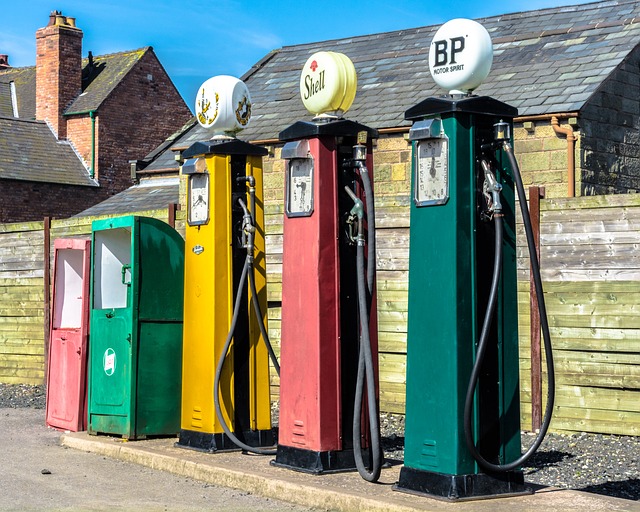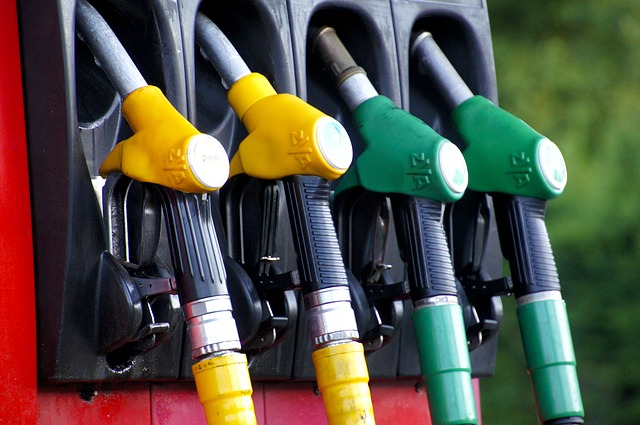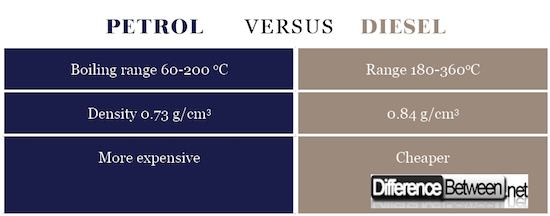Difference Between Petrol and Diesel
The importance of obtaining and processing petroleum is not solely in the production of petroleum products used as fuels for engine propulsion, lubricants, or as heating fuels, but also in chemical oil processing, in which different products of low molecular weight are produced, such as, for example, methane, ethylene, etc., which serve as starting materials for the synthesis of various basic chemicals as well as final products.

What is Petrol?
Petrol is a mixture of liquid hydrocarbons having ASTM distillation limits of about 40 to 200 ° C. Petrol contains light and heavy components with boiling points, which although can go beyond this limit, most are between 10 and 230 ° C. The specific weight of the gasoline is in the range of 0.650 to 0.825. Petrol is used as motor fuel for road motor vehicles, i.e. for internal combustion engines (Otto engines). In this case, their application involves mixing with air, compression, initially igniting the mixture by means of an electrical spark, use of mechanical energy generated by the explosion, and finally exhausting of the exhaust gases. The basic quality requirements for petrol is a good octane number. The octane number provides information on the fuel combustion process in the engine, which can sometimes take place in an undesirable direction, in terms of both power recovery and engine maintenance. In order for a particular engine to work satisfactorily, it is important that the mixture of fuel and air is burnt normally, i.e. at a precise moment. Octane number is a measure for the anti-blasting property of petrol. When determining the ON, its combustion method in a laboratory engine is compared with the combustion of mixtures prepared from n-heptane and isooctane in different proportions. Petrol obtained exclusively by atmospheric distillation of oil is not good enough, and in addition, the resulting amount of petrol is insufficient for the needs of the market, therefore new petrol of high ON must be produced. These petrols are produced by processes of cracking, reforming, hydrocracking, alkylation, polymerization and isomerization. In Europe, three different qualities of unleaded petrol are sold:
- Regular (90 to 92 octane, depending on the national standards),
- Premium (95 octane),
- Super plus (98 octane).

What is Diesel?
As with fuel oils, stability is a problem that occurs when using diesel fuel. The basic challenge is that different fuels cannot be mixed without any harmful consequence. Thus, when mixing a catalytic cyclic oil (cracking) with an oil distillate, the fuel is prone to formation of precipitate. The use of dispersants and rubber-producing inhibitors makes it possible to produce such mixed fuels. Refineries generally produce several types of diesel fuel, which depends on the engine construction and operating conditions. The combustion engine of a diesel engine differs significantly from the petrol engine. In petrol engines, the fuel is dispersed in the air stream, whereby an explosive mixture is generated initially by electric current. In the diesel engine the fuel is injected into the air that was previously compressed and heated to the ignition temperature. In this case, no electric spark is required to cause combustion. Fuel must be burned at proper, uniform speed at the moment when the cylinder compression chamber is filled. Otherwise, oil vapor may penetrate the combustion zone, burn it thereafter, causing more explosion centers. The result would be occurrence of unbalanced overturning and local overheating with normal and improper elevation of the pressure in the engine compartment. Thus, a situation similar to that of t launching (detonation) in the Otto engines would occur. Therefore, the diesel engine fuel must have the ability to make the ignition lighter as opposed to the Otto-engine fuel that should be more resistant to ignition. The flammability qualities in these two fuels are therefore contrary.
Difference Between Petrol and Diesel
-
Characteristics
Petrol is a mixture of liquid hydrocarbons with a boiling range of 600C to 2000C. It consists of hydrocarbons having a carbon number of 5 to 12, and some of its properties can be compared to C8H18. Petrol’s density is 0.73 g/cm3, and lowest thermal power of 43900 kJ/kg. For aircraft’s e piston engines, petrol with a boiling range of 500C to 1700C is used. The avionic gasoline density is 0.72 g/cm3 and its temperature is not higher than -600C. Petrol with a wide range of boiling temperatures ranging from about 600C to 240 0C is used as jet engine fuel. This petrol has a density of 0.77 g/cm3 and lowest heat power of 43400 kJ/kg. Diesel represents a fraction of oil with a boiling temperature range of 1800C to 3600C which partially overlaps with the range of kerosene. Diesel’s density is 0.84 g/cm3 and the lowest heat capacity is 42500 kJ/kg.
-
Usage
It is used as a fuel for piston motors with electric ignition. Diesel is used as fuel for diesel engines and for central heating.
Petrol vs. Diesel

Summary
- Petrol is hydrocarbon mixture of predominantly linear and branched paraffins, olefins and cyclic hydrocarbons, with molecules of 5 to 10 carbon atoms and boiling range of 60 to 2000C. It serves as a propellant fuel for IC engines in which the fuel mixture initially burns with electric spark.
- Diesel fuel is a complex mixture of different refinery products and additives. It is a mixture of kerosene fractions and light gas oil fractions between 180 and 3600C, and contains predominantly hydrocarbons having 14 to 19 carbon atoms (but up to 25). It is used as propulsion fuel for starting engines in which the fuel mixture is injected into the compressed hot air and burns independently (without electric spark).
- Difference Between Thermodynamics and Kinetics - June 24, 2018
- Difference Between Welding and Soldering - June 24, 2018
- Difference Between Additive Colors and Subtractive Colors - June 20, 2018
Search DifferenceBetween.net :
Leave a Response
References :
[0]Stinson, K.W. “Diesel Engineering Handbook” 12th Ed., Norwalk, Connecticut: Business Journals, 1981. Print
[1]Heywood, J.B. “Internal Combustion Engine Fundamentals”. New York: McGraw-Hill Book Co. Inc., 1988. Print
[2]Owen, K., Coley, T. “Automotive Fuels Reference Book” 2nd Edition. Pennsylvania: Society of Automotive Engineers, 1995. Print
[3]Image Credit: http://maxpixel.freegreatpicture.com/Retro-Gasoline-Fuel-Petrol-Petrol-Pumps-1657519
[4]Image Credit: http://maxpixel.freegreatpicture.com/Gas-Station-Fuel-Diesel-Fuel-Gas-Pump-Energy-Pump-1596622
